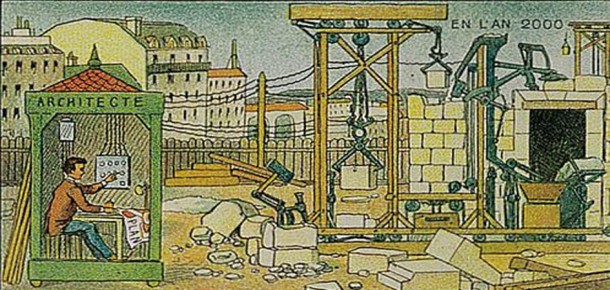TDC_AIND
To Digital Craft
Author:
Year:
Conference:
Location:
Dana Tănase, Ionuț Anton
2011
Artists in Industry
Bucharest
The term craft is lying somewhere between art, which relies on creativity, and science, which relies on knowledge. Thus, in crafting, the creative aspect is inseparable from the production process. Traditionally craftsmanship has been linked to hand made objects, whose value lies in their uniqueness, the workers skills imbued into it and the time spent on making the object.
Until recently architects were focusing on designing intricate free form objects, without any regard towards the making. The promise of digital technologies is that one can produce such custom objects. New forms of digital artisanship are linking, once again the conceivers and the makers [1]. Design and fabrication technologies now offer the opportunity for the artists and architects to be more involved in the process of making.
This approach should be viewed with caution, not to be applied blindly. The word “custom” commonly understood as “one of a kind”, has also a more subtle meaning: rare, hard to obtain, and usually the work of craftsmanship. Nonstandard technologies promise to dissolve this other feature, lowering the tax on diversity, on uniqueness. From this point of view, technologies for nonstandard production may appear to expand and multiply to some commodities beyond necessity hence fostering artificial demand and consumption [2].
All digital technologies are based on numerical control technique, but the standardization production means are as well. If initially the numbers were used to control and regularize, now, through computational environment capabilities are becoming generators of diversity. As the Euclidean mathematics came to be considered a special case of nonstandard mathematics, that simplifies the complexity in order to achieve some level of understanding, the numerical control technique evolved too.
Digital fabrication shouldn’t be seen as replacing all the production technologies used until now. Some objects were still handmade into the mechanical age, and some will be handmade and mechanical made into the age of digital age. The digital technologies are a bent on adding precision to the design intent, and can be used to eliminate the insubstantial and unfounded elements. This doesn’t mean that the digital tools are an imposition that removes the intuitive meaning of design. Architecture should able to combine several approaches, both intuitive and mathematical thinking [3].
The authors will argue that the contemporary computational technologies are emerging as the tools for the new artists and architects in their becoming as digital craftsmen. Nowadays we are reinterpreting traditional craftsmanship that relies on the artisan skills in the making process and combining those with the opportunities provided by the technological advances in the industrial age. Hence the artists and architects relinquish their role as abstract conceiver of designs and become more involved in the physical materialization. Doing so they are becoming digital artisans.
[1] Carpo, Mario. 2011. The Alphabet and the Algorithm. MIT Press, p 117
[2] Ibid, p 102
[3] Menges, Achim. 2006. “Instrumental Geometry.” Architectural Design 76 (2): 42–55, p. 27

Source: Villemard, 1910 / Chromolithographie Paris, BNF, Estampes / http://expositions.bnf.fr/utopie/feuill/index.htm

